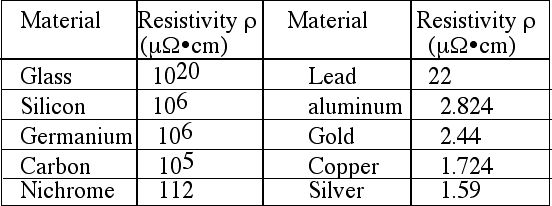Chapter 22 notes:
Electric Potential Difference:
- Formula symbol : V
- Energy carried by the circuit The amount of work, or ‘push’ done to move the charges
- Unit: Joules/Coulomb or Volts
- Unit symbol = V
Current:
- Formula symbol: I
- Flow of charges through the circuit
- Unit: Coulombs/second or Amperes (Amp)
- Unit symbol : A
Resistance:
- Formula symbol: R
- Property that determines how much current can flow through a circuit
- Unit: Volts/Amp or Ohms.
- Unit symbol: W
Power:
- Formula symbol: P
- The amount of energy dissipated per second (converted to another form) in a circuit.
- Joules/second, or Watt.
- Unit symbol: w
Ohm’s Law:
Power:
Water Analogy to Electricity
Amperage =
flow rate of the current.
water
----- amount of water going through the pipe in a given time. Units gallons per minute
electricity
--- amount of charges going through the conductor in a given time. Units: Amperes or Amps. Ampere 1 Coulomb of charges per second
(1 Coulomb 6.25 X 10charges)
Voltage = the "push" or energy.
water ----------water pressure. Units = psi (pounds per square inch)
electricity ------joules of energy on each Coulomb of charge. Unit = Volt (one JouIe per Coulomb)
Resistance =friction that "slows the flow"
water ---------water in pipes or tubes drags on the sides of the tube. The smaller and longer the tube, the greater the resistance, and less water comes out of the end of the tube. Unit-- None
electricity --- charges encounter resistance from other charges as they pass through a conductor. The smaller and longer the conductor, the greater the resistance, and less electric current will flow through the ,conductor. Unit = Ohm. One Ohm = 1 volt/ampere lost due to resistance.
Resistance
- Electrical resistance is the opposition to the flow of electrons in a circuit.
- Electrical resistance is present in all parts of an electric circuit
- The unit of electrical resistance is the ohm. An ohm is equal to one volt/ampere
- Ohm’s law, R = V/I, can be used to solve for resistance (R), voltage difference (V) and current (I) in electrical circuits.
- Wire resistance in electrical circuits is similar to fluid resistance in pipes.
- The total resistance (Rtot) of two resistors (R1 and R2) connected in series is Rtot = R1 + R2
- The total resistance (Rtot) of two resistors (R1 and R2) connected in parallel is
- Conductors, semiconductors and insulators are material classifications based on resistivities. Resistivity means the capacity to resist electric current
Resistivity
- Constant for any material
- Resistance is proportional to the resistivity and length of the material, and inversely proportional to the cross-sectional area of the material.
- Resistance based on resistivity is given by:
 
|



